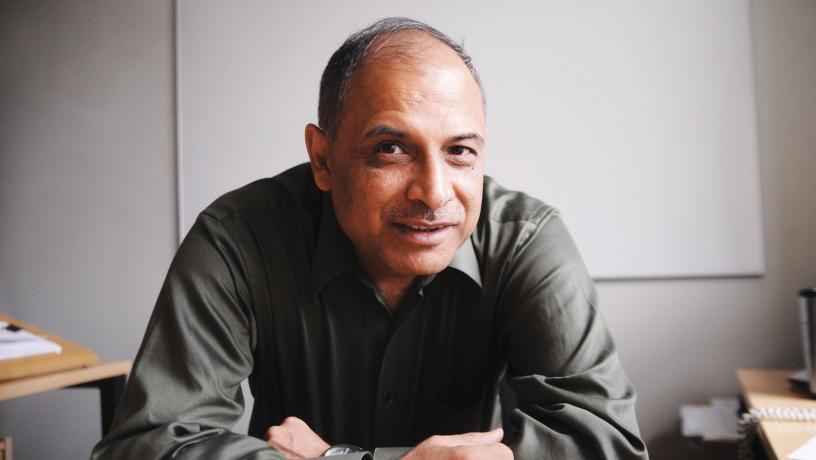Big Data to Assess U.S. Climate & Water Supply Risks
Columbia Earth and Environmental engineers lead a $1M multi-university team funded by NSF Convergence Accelerator to use AI and machine learning to quantify America's water supply risk in the face of climate change and aging infrastructure

Prof. Upmanu Lall
A multi-university team that includes Columbia Engineering, the University of Massachusetts-Amherst, Cornell, and North Carolina State University has received $1 million in funding from the National Science Foundation’s (NSF) Convergence Accelerator program, a new initiative designed to accelerate use-inspired research to address wide-scale societal challenges. The program stresses a convergence approach, or transformative multidisciplinarity, to transition basic research into actual practice and societal benefit.
The group, led by Upmanu Lall, Alan and Carol Silberstein Professor, and chair of Earth and Environmental Engineering, is one of 29 teams joining phase one of the two-phase program who are charged with delivering tangible solutions that have a nation-wide societal impact and can be implemented at a faster pace. The other PIs are Casey Brown (UMass), Ken Kunkel (NC State) and Scott Steinschneider (Cornell).
The Columbia Engineering led team has been awarded $1 million for their project to address a major gap in the resilience of the U.S. water supply to climate variability and change—the vulnerability of small utilities that face current operational challenges and lack significant capacity for longer-term planning. The researchers will use AI and Machine Learning to develop models to quantify the nation’s water supply risk at the level of water utilities and their regulatory state and federal agencies.
The models will be used for strategic planning and operations in the face of an increasing frequency of floods and droughts due to climate change and aging infrastructure. “These are major factors that constitute significant risks for the nation’s safe water supply,” says Lall, who is also director of the Columbia Water Center and a professor of Civil Engineering & Engineering Mechanics. “Except for the largest 20 to 30 water utilities in the U.S., the thousands of smaller ones lack the financial and technical capacity to analyze these risks. This impacts their ability to get financing for improvements, and it also exposes the supply chains of industry to the risk of not being able to get reliable water. We will aggregate data sources and scalable models that will make climate and water risk analyses accessible to all communities.”
Currently, researchers most often take a physics-based, sequential modeling approach to model climate and water systems and this has led to propagating errors and biases. The team has already demonstrated that AI and Machine Learning can provide much better risk predictions. They plan to use AI/ML with climate observations, climate model simulations, and water system performance date for breakthroughs in the quantification of water supply risk.
The Columbia-led team plans to build a multiscale modeling system and share models and data on a cloud-hosted, user-centric analytics platform targeted for the water supply industry. They will use data collected from partnering utility companies across the country to adapt, develop, and apply a variety of modern machine learning and data science tools to identify features and forecast spatio-temporal scenarios, such as a midwestern water utility in 2050, that inform specific risks not just for those utilities but for others who are not directly participating.
“It’s essential that our platform is responsive to user needs and becomes a community data and modeling platform that can reliably be used by non-specialists in data science,” Lall says. “And we will specifically target systems in low income communities, especially where underrepresented communities are vulnerable to climate driven disruption.”
Phase one of the NSF program is a nine-month planning effort to further develop each team’s initial concept, identify new team members, participate in innovation curriculum, and develop an initial prototype. In June, at the end of phase one, each team will participate in a pitch competition and a proposal evaluation. Selected teams from phase one will proceed to phase two, with potential funding up to $5 Million for 24 months. The team expects to be competitive in that phase given their plans to both provide a public good and a tradable financial instrument that will allow utilities and their customers to actively hedge these risks, and also disclose them as part of a physical climate risk filing to the SEC.
